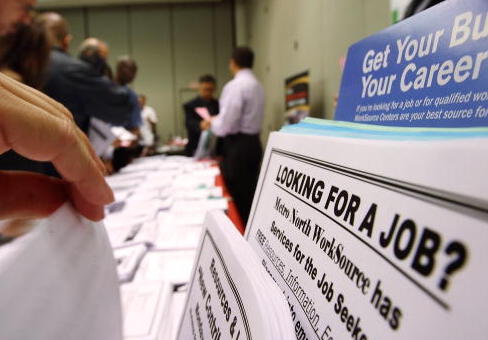The median income for Americans hit its highest recorded level ever in 2017, according to new information released Wednesday by the U.S. Census Bureau.
The poverty rate fell by about half a percentage point (although a supplementary measure of poverty showed no statistically significant change) in the same year. These two facts indicate that America continues its slow but steady climb out of the depths of the Great Recession.
These results come from the latest version of the Census Bureau's Annual Social and Economic Supplement (ASEC) to the Current Population Survey (CPS). According to the bureau's analysis, median household income in 2017 was $61,732. This represents a 1.8 percent increase over the previous year, and the third consecutive year of increase overall.
The Census Bureau redesigned the ASEC in 2013, so it cautioned against comparisons to rates prior to that year. Given that caveat, it does provide a long-run view of median income stretching back to 1967.
![]()
The increase in median household income is likely tied to shifts in the median earnings of American workers. Male workers saw a three percent bump in median earnings in 2017; there was no statistically significant change for female workers. The wages of full-time, year-round employed men and women, meanwhile, actually decreased by about a percentage point. This even as an additional 1.4 million men and 1.0 million women were found to be working full time by comparison to 2016.
The Census Bureau's analysis also offers insight into economic inequality in the United States. One measure of inequality, the "Gini coefficient," remained unchanged between 2016 and 2017, indicating that overall equality did not change significantly.
But the gains of 2017 were not evenly distributed across American households. The median incomes of non-Hispanic White and Hispanic Americans rose by 2.6 percent and 3.7 percent, respectively, in 2017. But Black median incomes remained unchanged, and Asian incomes actually fell. The trends in median income by race (subject to the same 2013 revisions) makes clear how the racial income gap has persisted.
![]()
Data on the income distributions of each group represent the shifting fortunes of America's ethnic communities. Asian Americans concentrate toward the upper end of the income spectrum, while Black Americans are overwhelmingly stuck at its bottom. White and Hispanic Americans, meanwhile, are centered somewhere in the middle.
![]()
Households home to the native-born primarily reaped the benefits of the median income growth, seeing a net 1.5 percent increase. The median income of foreign-born households—which are more likely to be in poverty than native-born counterparts—remained stagnant, by contrast.
While the gains of the past year concentrated in certain places, indicators of poverty in 2017 look positive. 2017 was the third consecutive year in which the U.S. poverty rate fell, a cumulative 2.5 percentage point decline since 2014.
According to the Census Bureau, poverty fell for people in families, people in the west, people outside of cities, all workers, people with disabilities, people with only high school diplomas, and people with only some college experience. The only group that saw an increase in poverty were people with bachelor's degrees, up about 0.3 percentage points. Still, the Bureau noted, people with at least a bachelor's degree had the lowest poverty rates in 2017.
